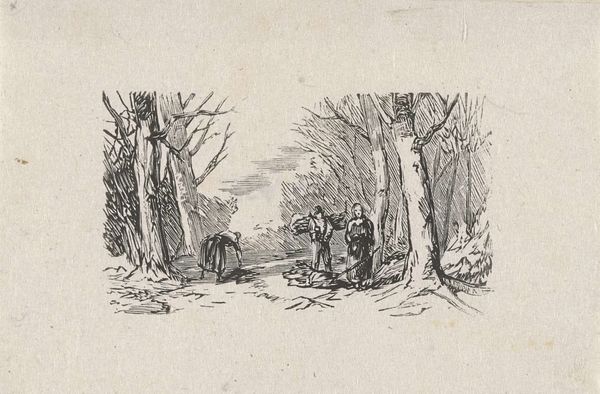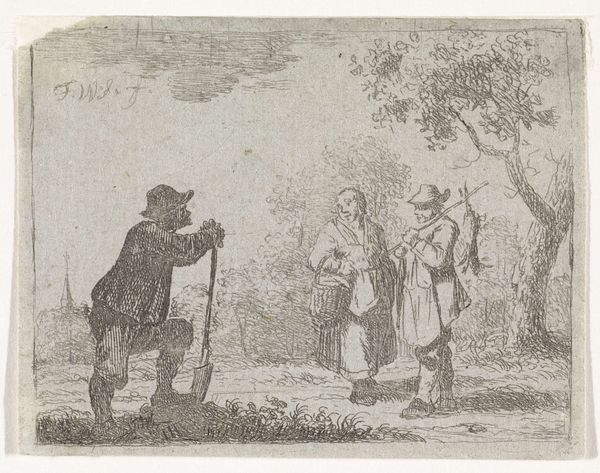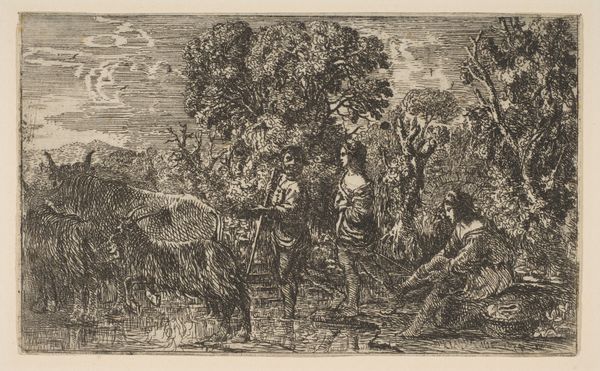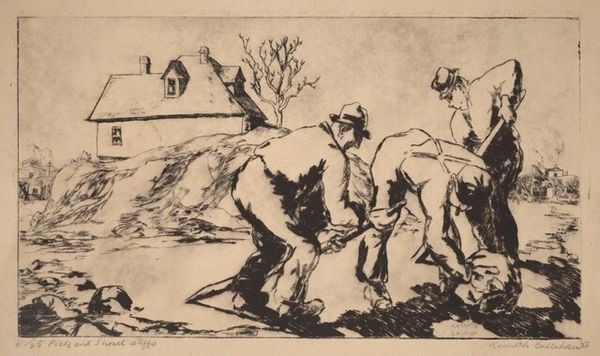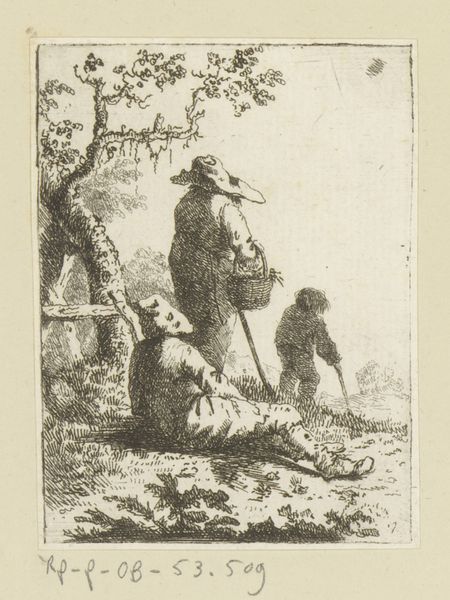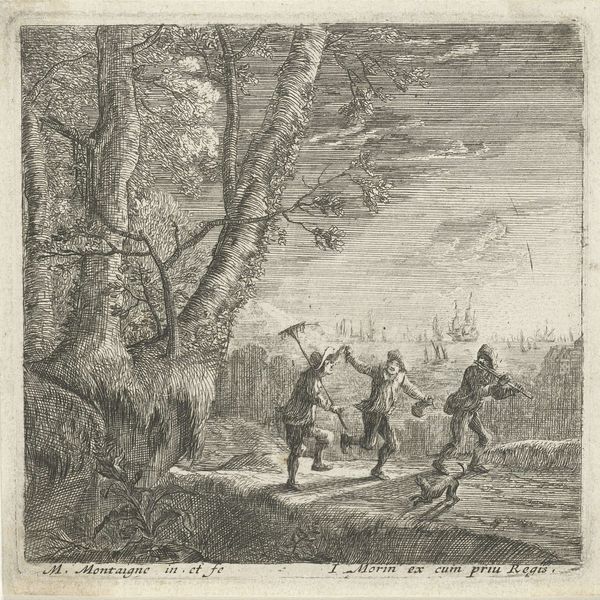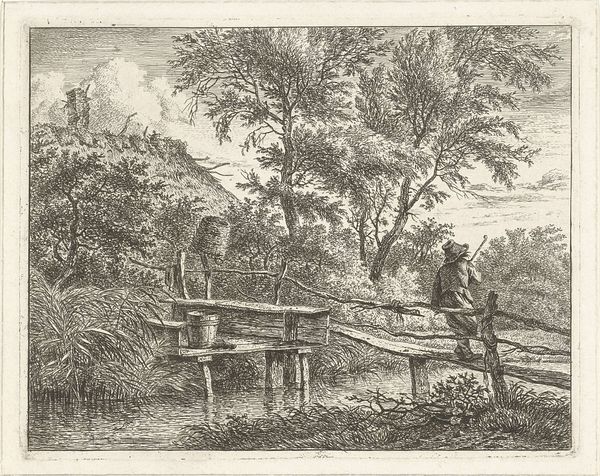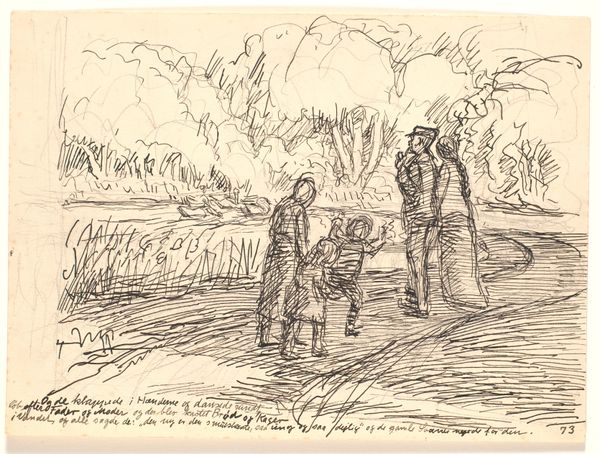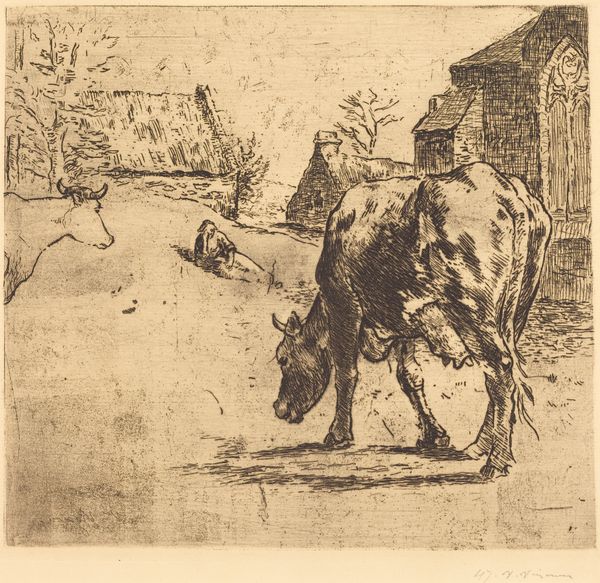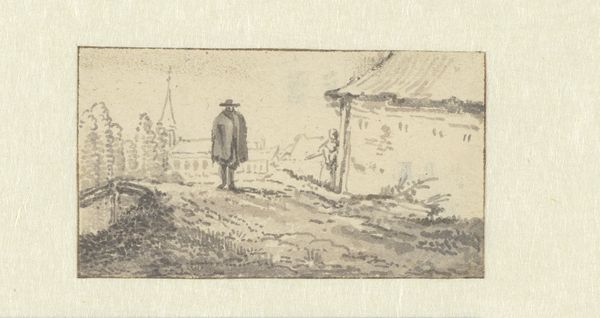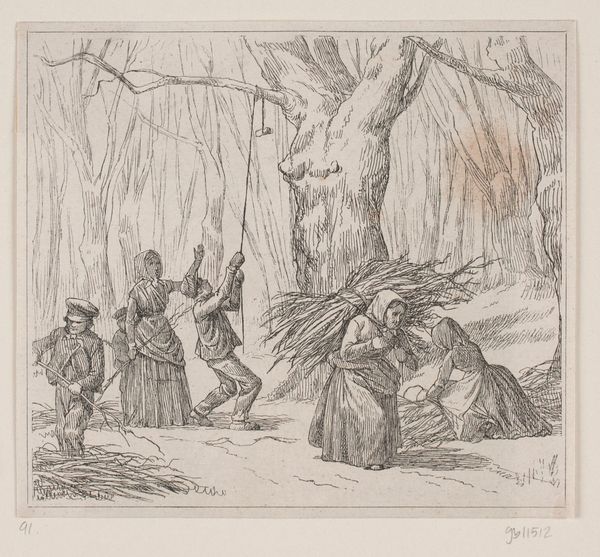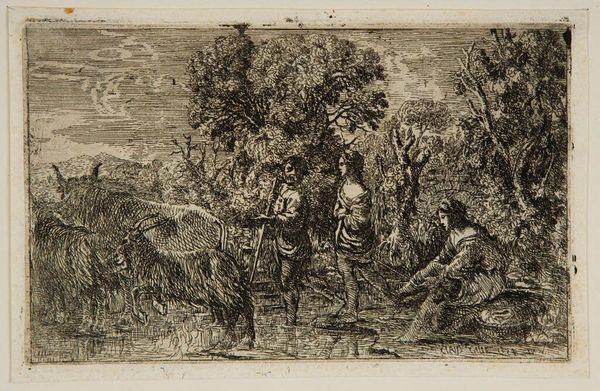
print, etching
#
medieval
# print
#
pen sketch
#
etching
#
pencil sketch
#
landscape
#
figuration
#
pen-ink sketch
#
pen work
#
genre-painting
Dimensions: height 42 mm, width 64 mm
Copyright: Rijks Museum: Open Domain
Curator: Let's discuss this evocative etching from somewhere between 1739 and 1851, “Winterlandschap met figuren,” now held in the Rijksmuseum collection. It's attributed to Johannes Janson. Editor: It immediately strikes me as desolate but also lively. The sparse lines capture the starkness of winter, but there's also a lot of movement – people on the ice, a figure observing. The material itself, the etched lines on the page, creates that chilly atmosphere. Curator: Indeed, and if we delve into the genre painting aspects, it speaks to how labor and recreation intertwine within community life. Look closely, it pictures scenes of labour that are only afforded by this cold season. The frozen canals serve a purpose outside leisure. This etching isn't merely a pastoral idyll but speaks to survival, the societal aspects that structure people's existences under difficult seasonal constraints. Editor: That is spot on! The figure with their back to us especially piques my interest. They seem separate, observing but not participating. Are they removed by choice or necessity from this winter activity? It's curious how their presence reshapes our engagement with this so called genre painting as an outsider looking in. It makes you question labour itself. What does it produce here other than precarious circumstances for other people's merriment? Curator: It raises a really critical point about marginality, doesn't it? Is he part of a working class, yet estranged? Also, the use of line becomes significant here, conveying not only the visual reality of a winter landscape but also the social realities of those existing within it, where perhaps that figure’s identity places him at a distance from community activity. Editor: Absolutely. Considering the likely audiences for prints such as these at the time, how did it portray social class? Curator: Well, these scenes were certainly consumed by wealthy households, so perhaps the intent of displaying it at home wasn't always geared toward empathy or change! Instead they became tokens for idealizing a simplified working life. It shows that there is a real potential for distortion by framing reality this way through this art form. Editor: A chilling thought, almost as chilling as the winter air depicted! Seeing the conditions people depend on in different climates really hits differently now.
Comments
No comments
Be the first to comment and join the conversation on the ultimate creative platform.
